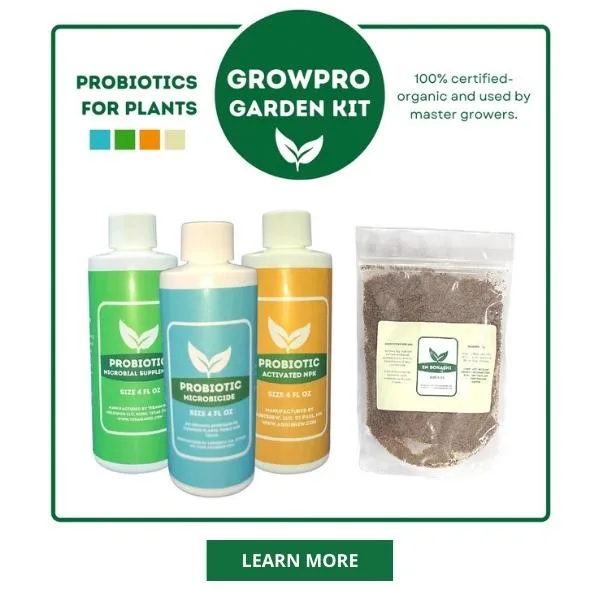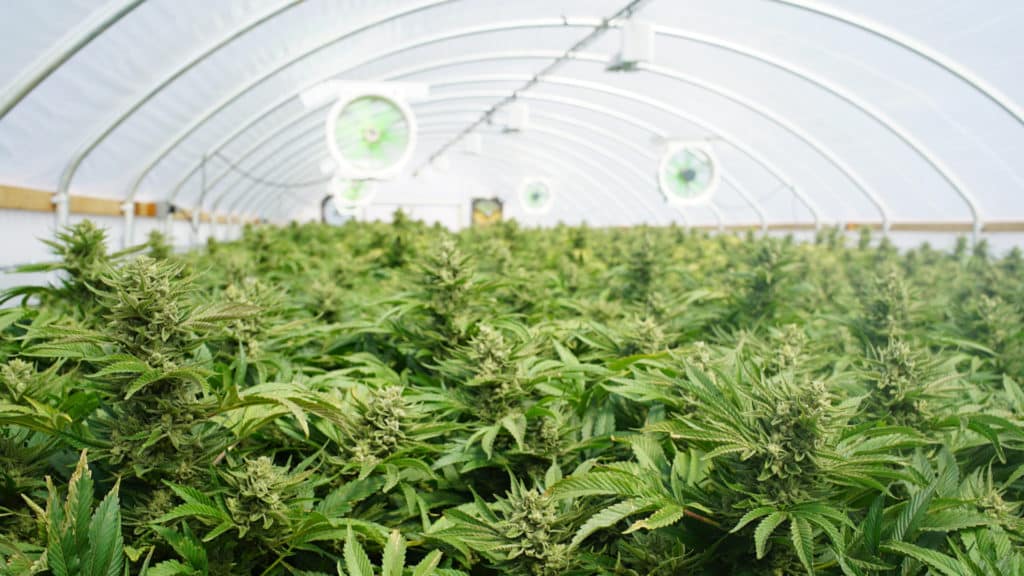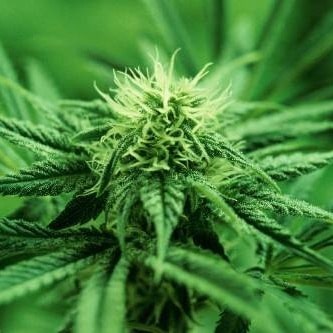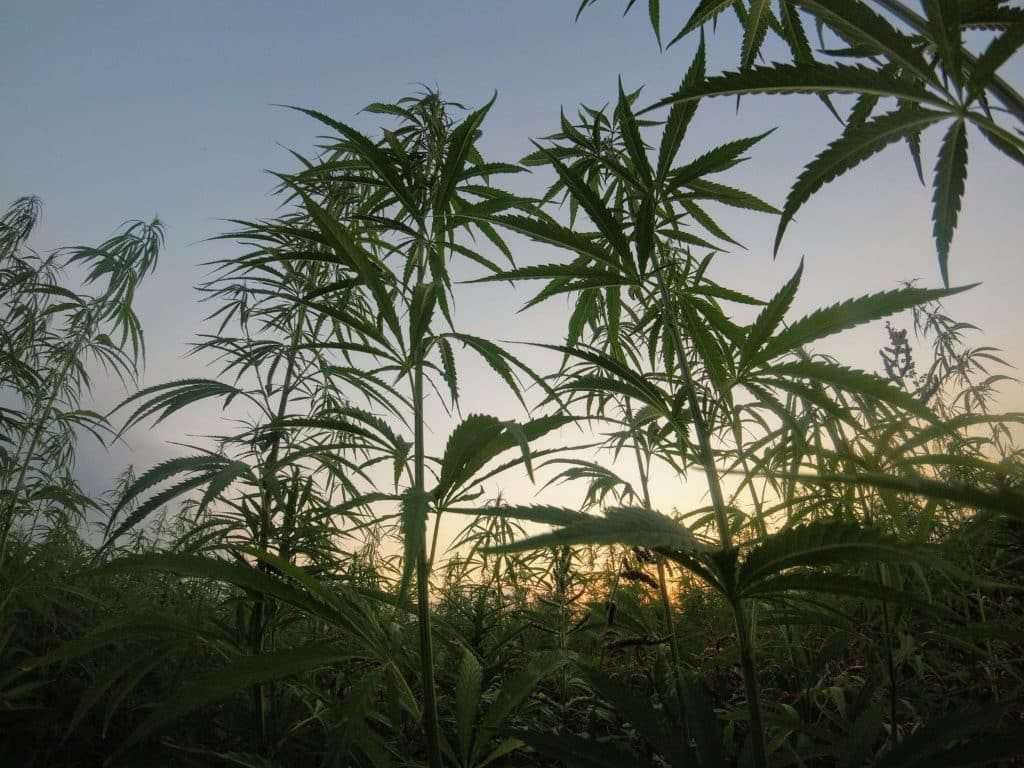Sometimes new marijuana growers will focus a lot on aspects such as soil, strain, and lighting setups, but equally important to the success of their plants is the type of fertilizer they decide to use. Every grower wants their plants to be healthy and productive, and choosing fertilizer that is the right one is one big way to accomplish that goal. And, of course, we all want to grow big buds!
Perhaps you are a grower who is in need of trying a new way of growing, or perhaps you are a newbie who has never grown marijuana before. In either case, having a deeper understanding of the different fertilizer options out there is vital and can only help you in your marijuana growing endeavors and will help you in choosing fertilizer that is right for your needs.
Let’s look at some of the decisions you will have to make in choosing fertilizer for you.
Choosing Fertilizer for your Marijuana Plants
Store bought vs. homemade

One of the big questions any marijuana growers face is whether to make fertilizer for their marijuana plants themselves or buy it from store shelves. In general, buying nutrients from a garden center or online is a hassle-free, simple way to get your marijuana plants all of the nutrients they need.
That being said, many people prefer to make their own compost or other such fertilizers. They choose this because they have more control over what exactly goes into it. They know where all the ingredients come from. Some growers believe that this type of natural fertilizer is a healthier option for both the marijuana plant and the end user when it is smoked or consumed.
If you are starting from scratch because you have never grown marijuana before, using a professional, store-bought system is likely the safest option in terms of leaving little room for error. The key is to buy a product that matches well with your growing medium and grow setup, as well as your personal preferences and lifestyle.
When choosing fertilizer, whatever you do, don’t buy fertilizers that are extended or slow release. They sound fancy and impressive and even can work very well for other types of plants, but they are not a good choice for marijuana plants. Steer clear of these products.
If you are planning on making your own fertilizer and nutrients, you had better look into how to properly make a compost pile as well as some other methods. If you are interested in buying a product or system from a store or online, however, then you should continue reading for some of the best options available.
Soil fertilizers
If you are growing your marijuana plants in soil (or are planning on it), there are some specific nutrients that you can buy to help your plants thrive in their soil grow setting. That being said, water and nutrients go hand in hand. Because soil is often the medium of choice for new growers (for good reason), it is also worth pointing out that overwatering your plants when they are growing in soil is a common mistake many new growers make.
Make sure that the top inch of the soil is dry before you water again, and only include your nutrients in approximately every other time you water. If you water correctly, there should be about a fifth of the water draining out the bottom of the pot. If you follow all of these rules, you should be able to reduce the risk of overwatering. As long as you are watering correctly, the nutrients will be able to easily do their job.
Let’s look at some of the best, when choosing fertilizer for soil grow setups.
Learn how EM-1 can help enhance your yields within weeks.
Flower Power fertilizer

This fertilizer works well for an all around mixture of the key nutrients your plants need. Flower Power ensures that your marijuana plants will get the three main nutrients: Phosphorus, potassium, and nitrogen. While all three of these nutrients are always necessary, they are required by your marijuana plant in different ratios and quantities, depending on the phase of growth.
For example, nitrogen helps with leaf growth, but phosphorus helps most with bud growth. That means that nitrogen is key in the vegetative phase of your marijuana plants’ life cycle, but a higher proportion of phosphorus is needed for a healthy flowering phase.
The good thing about potting soils is that they are already equipped with these three main ingredients. That means that, at least for the first three weeks of your plants’ lives, you won’t actually need to add any extra nutrients. Right around the three-week mark, however, is when adding in nutrients will become necessary.
During the vegetative phase, your plants will need equal parts phosphorus, potassium, and nitrogen (20% each). When you feed it to your marijuana plants, make sure you aren’t giving them the full dosage listed on the package, but rather dilute it to half or even a quarter strength. This is because, especially for marijuana plant growing indoors, the full strength of a fertilizer would shock and weaken plants rather than feeding them the energy they need.
When using Flower Power fertilizer, give it to your marijuana plants just twice a week for indoor grow setups. Flower Power has a watering and feeding schedule included with the product, so refer to that for any scheduling questions you might have.
Fox Farms trio
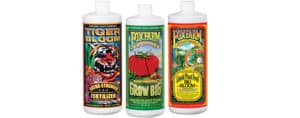
One of the best products for inexperienced marijuana growers, Fox Farms lets the grower feed their marijuana plants without having to worry about anything else. In other words, Fox Farms includes everything your plants will need. No matter what strain of marijuana you decide to grow, Fox Farms should do the trick.
There are several versions of Fox Farms, including ones for soil and hydroponic grow setups. Be sure to choose the one that corresponds with your own setup. The trio of Fox Farms products includes “Grow Big,” “Tiger Bloom,” and “Big Bloom.” You will want to use them all and follow the instructions that come with them.
Perlite and vermiculite marijuana fertilizers
One good way to start growing is a setup of only a pot, and some soil made of 70% Fox Farms Happy Frog soil (or Humboldt soil), and 30% perlite. For hydroponics setups, use half fertilizer and half water and peat moss, and mix in the vermiculite or perlite.
Perlite and vermiculite work well as fertilizers. They are found on store shelves (and virtual store shelves online). They are made by a process that heats them up to very high temperatures (between 1400 and 1800 degrees Fahrenheit). The heat causes the product to become porous, meaning they allow more oxygen and water flow and retention.
Perlite and vermiculite help soil media avoid clumping into chunks as they dry out. They also naturally house minerals including magnesium, calcium, and potassium — all of which marijuana plants will use. When mixed with the soil, these minerals will eventually seep into the entire grow medium.
Miracle-Gro

You may have heard some mixed reviews about the well-known “Miracle-Gro.” This product is famous for being used as a plant fertilizer, at least when it comes to regular household plants (not including marijuana). In fact, it is one of the top fertilizers out there — but it does not work well for marijuana plants.
Miracle-Gro tends to give your plants an overdose of nitrogen when they are in their flowering phase. Your plants need lots of nitrogen during their beginning phases, but not as much during the flowering phase, making this unhelpful.
This is because Miracle-Gro simply gives the same nutrient ratios to your plant no matter what part of its life cycle it is in. Marijuana plants need different proportions of different nutrients during the various stages of their life. Having the same exact nutrient formula for each stage is not useful at all.
For all of those reasons, Miracle-Gro is not recommended for marijuana plants.
Dyna-Gro
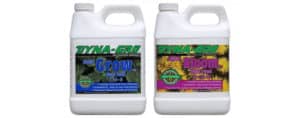
This product works well for those who want to get the most bang for their buck. Dyna-Gro has several options available, depending on the life cycle phase your marijuana plant is in. This includes foliage-pro and other bloom fertilizers.
Dyna-Gro is a popular and effective choice for any kind of growing medium, including soil, coco coir, and hydroponics. Use the foliage-pro product during the vegetative phase of your plants’ growth, and the bloom product during the flowering phase. Following the instructions on the bottle should keep your feeding schedule and proportions in check, and using Dyna-Gro throughout the different stages of your marijuana plants’ life will help them do just fine.
Human urine
Yes, you read that correctly: your urine can be used at a fertilizer! Before you start urinating on your marijuana plants, know that full strength can actually kill your plants. Dilute one full urination with a gallon of water and put that directly on your plants right away (before ammonia starts forming).
Human urine works because it had lots of nitrogen. Nitrogen is a crucial component for marijuana plants to grow foliage in its early and vegetative stages, so this turns out to be an extremely cost-effective way of getting your plants the nitrogen they need.
Chicken manure
You can either buy chicken manure compost or make your own, but if you purchase it, make sure it is organic slow release chicken manure. This is known to lead to higher yields, and if you have chickens, it is also highly cost effective. Your plants will love getting nutrients from chicken manure composts.
Wood ash or lime
If you are growing marijuana plants outdoors and you know that the local soil is acidic, wood ash will be a very useful tool for you. It helps offset the acidity of the soil. You should feed it to your plants by mixing it with water: one shovel of wood ash for every five gallons of water should do the trick. If wood ash is not doable for you, lime, found in garden centers, will also work.
Vinegar and baking soda for carbon dioxide
Marijuana plants really love carbon dioxide, and generally, the more carbon dioxide is available in the air, the healthier the plants will be. Many marijuana growers consider this to be a kind of growing “hack” for marijuana plants.
White vinegar can be used to produce carbon dioxide. All you have to do is to get a liter-sized bowl, put in baking soda, and then drip white vinegar into it one at a time, once every two minutes or so. This combination will release carbon dioxide into the air in large proportions.
If budget isn’t a problem, you can also purchase a generator, or else make your own. This works best for indoor grow setups. Hang a bottle of vinegar over a bowl of baking soda, then poke a tiny hole into the vinegar’s cap, so it drips down into the bowl.
This should not be done outside or in a place where people will start smelling the vinegar, as it will draw attention to your marijuana plants. Additionally, outdoor setups will include wind that blows the CO2 away rather than keeping it within “breathing” distance of your marijuana plants.
Some growers use plastic coverings to drape over their plants and keep the CO2 trapped inside. Then they make a CO2 generator and put it underneath the plastic. This generator should be made with a jar filled a quarter full with baking soda and then pouring one tablespoon on top. Let it sit for 15 minutes, then do it again. Keep the plastic covering in place for at least four hours.
In short, marijuana plants can’t get too much carbon dioxide. Making this “CO2 bomb” will be best done at night since fewer people are around to notice the smell and the appearance for the four hours it lasts.
Compost

Many people cringe at the thought of using compost for their marijuana plants, mostly because they think about manure, table scraps, and other unpleasant materials. The fact of the matter, however, is that compost can make for the healthiest marijuana plants of them all.
Just as it naturally happens in the wild, animal poop and leftover organic products (vegetable and fruit scraps, among others) go back into the earth and provide the plants on the ground with the nutrients they need to thrive. This is how a healthy ecosystem works, and this is how composting can be advantageous to your marijuana plants.
Compost has no negative effects on outdoor soil so it can be done anywhere. The key to making your own compost is to turn it often so the “ingredients” blend and mix on a daily basis. Compost piles tend to get really hot because of the microbes which are eating up the rotting organic material. This could, in fact, lead to a fire. Turning the compost pile often also helps lower the risk of this happening.
Compost takes time to prepare (allow it approximately three months to turn into rich, nutrient-filled soil for growing plants), but the payoff is huge. For anyone environmentally conscious, it is the perfect option because it reduces food waste and also allows you to naturally have a successful marijuana crop. More on making your own fertilizer in this article and this article.
Fertilizers for hydroponics

If you are growing your marijuana plants in a hydroponics setup, you will need to take into consideration some different types of fertilizers that are out there. In case you don’t already know what growing in hydroponics means, it’s the system of growing plants with their roots sitting directly in water. It can be an extremely effective way of growing marijuana, but of course, it comes with an entirely new set of requirements — including fertilizer.
General Hydroponics Flora Series Nutrient Trio
This works not only in hydroponics systems but also in coco coir or soil media. You can get everything you need in this package, include a pH testing kit along with the fertilizer itself. This is extremely important when feeding your plants, especially when you’re growing hydroponically.
General Hydroponics FloraDuo
Made by the same company, FloraDuo is the 2-bottle version of the above system. The first bottle has plenty of nitrogen for the first half of your marijuana plants’ lives, and the second bottle is higher in phosphorus and potassium to help the bud growth during the flowering phase. It works well for beginners because the instructions are quite clear. The key is to always maintain a pH level of between 5.5 and 6.5 in your water, and you will see the positive results of this product.
Botanicare nutrition
Botanicare supplements include Base, Bloom, and Grow and cover all of the necessary nutrients that your marijuana plants will need throughout their lifetime. This is a great product for people who like to tweak and change things themselves since there is plenty of flexibility for adjusting the levels of calcium and nitrogen. This is not recommended for beginners.
Advanced Nutrients
This brand is pricier but recommended by those who use it. You can buy Grow, Micro, and Bloom from them for the best results. That being said, this top shelf product is expensive but not necessarily worth paying so much extra for. The less expensive products listed above will likely do the job just fine.
Fertilizers for coco coir
If you are growing your marijuana plants in coco coir or coconut coir, then you will need to consider other fertilizer options from the above ones listed. Coco coir is made from coconut husk fibers and is not only used for gardening, but also everyday products like welcome mats. Fertilizers well suited for hydroponics systems will also work fine for coco coir setups, but there are also some other options you may want to think about.
The pH level of a coco coir setup should be consistently between 5.5 and 6.5. Coco coir requires a little extra calcium and magnesium since that is typically a deficiency for marijuana plants in this grow system. Most nutrient systems for coco coir setups are not terribly pricey.
Canna Coco A + B and Cal-Mag
Found on Amazon plus elsewhere online, Canna products work really well for coco coir grow setups. This is an Amsterdam-based company that has nutrients specifically designed for marijuana, so you know that their products will work for your precious marijuana plants.
Fox Farms Nutrient Trio for hydroponics
The Fox Farms Nutrient Trio for hydroponics can work well for coco coir, especially for preventing calcium and magnesium deficiencies. Grow Big, Tiger Bloom, and Big Bloom are the products you are going to want for your coco coir setup. Stick to the instructions listed on the package.
Root pH
One of the most important aspects to consider when feeding your marijuana plants is the pH level at the roots. This is absolutely crucial in terms of your plants being able to take in nutrients properly. If the pH level is imbalanced, your plants could end up with a nutrient deficiency or toxicity, even if you’re feeding them nutrients in the right quantities.
For that reason, you should always make use of some sort of pH level testing kit. Sometimes these come with nutrient packages, in which case you will already be covered. It’s quick and easy to test the pH, and it will help you more than you know.
The main aspect of testing the pH is consistency and just knowing what’s happening down there at the root level. That way, if you see your marijuana plants exhibiting some strange symptoms, you already know that it could be a pH imbalance — or if it’s unlikely it’s a pH imbalance because you have been keeping it consistent and balanced.
For soil systems, the pH level should be between 5.8 and 6.5. For hydroponics system, the water should have a pH level of between 5.5 and 6.5.
When to stop the feeding schedule

When the flowering phase comes about, there are certain things you are going to need to think about. One of these things is how to know which nutrients to feed your plants and at which times, but another aspect is how long before the harvest should you stop feeding your plants and start “flushing” them out.
Like many aspects of growing marijuana, there isn’t one good answer. Some growers prefer to do it just a few days beforehand, while others choose a healthy number of weeks to do it. If you haven’t grown marijuana before, you can safely try to start the flushing process roughly two weeks before you harvest your plants. Don’t do it too far in advance, or else your plants could start to have negative health effects from the lack of nutrients.
Part of the reason for flushing is the fact that the taste of your plants can be deeply affected by the chemical harshness of fertilizers. Presumably, you don’t want to taste chemicals when you smoke your marijuana, nor do you want chemicals to go into your body. Therefore, flushing is not only for improving the flavor of the buds but also to protect your health.
How much to feed your marijuana plants
If you think you aren’t feeding your plants enough nutrients, it’s critical to increase their dosage gradually. It’s good if you have started out by underfeeding anyway because underfeeding is better than overfeeding (which leads to nutrient burns). The problem with a nutrient burn is that the leaves will be damaged and never recover — so the stakes are high.
For that reason, you should always start by feeding your marijuana plants about half the dosage of the recommended amount. Unless your plants are already deficient in one kind of nutrient, you should begin this way and then gradually increase as you see fit.
Generally speaking, however, most growers simply won’t need to increase their feeding dosage. It is usually the grow setups that are going for particularly aggressive speeds of growth that would ever need more than half a dose — super bright lights and extra fast growing strains, for example.
Mix the nutrients into the water that you regularly feed your plants. Depending on the growing situation, you may not need to feed your plants nutrients every time you water them. You can be more exact by testing out the PPM and calculating what you actually need to keep your plants healthy, as well as testing the PPM of the runoff water. If the PPM goes up, you are probably overfeeding your plants. If it decreases, you might be underfeeding them.
Growers Also Ask:
What Is The Best pH And EC Levels For Hydro Marijuana Growers?
How To Organize The Watering Process When Growing Marijuana
White Powdery Mildew And Your Marijuana Plants


